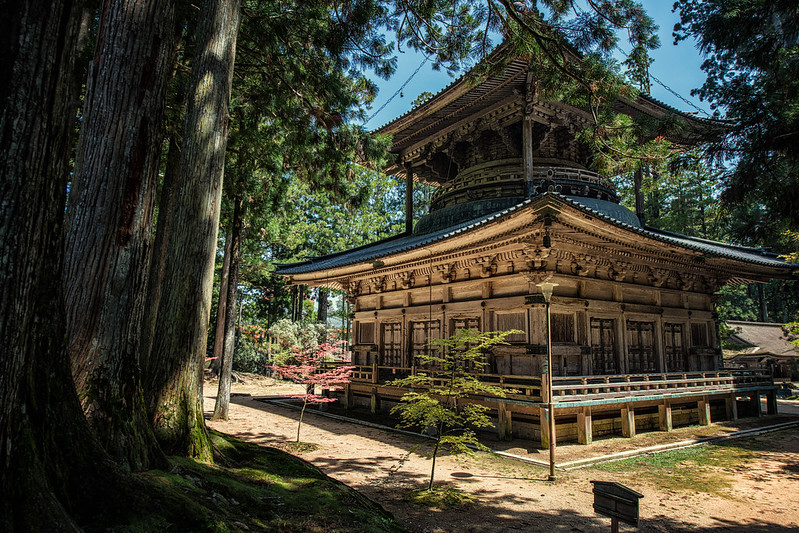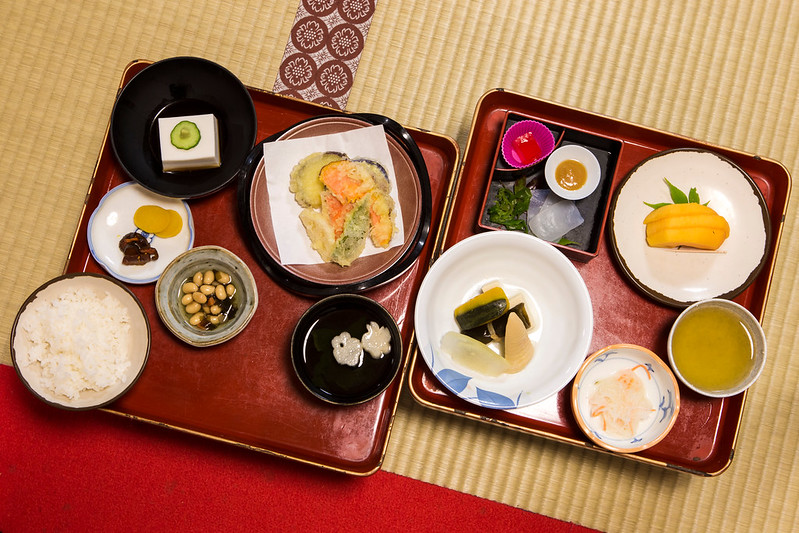
Experience the Life of a Buddhist Monk at Mount Koya
Wondering what the life of a Buddhist monk is like? Consider a trip to Mount Koya (a.k.a. Koyasan) in Wakayama Prefecture. Koyasan is the center of the sect of Shingon Buddhism, a religion introduced in 805 by Kobu Daishi, one of Japan’s most prominent religious figures.
Mount Koya has temple lodgings (shukubo) for visitors who want to experience, even just briefly, the life of a Buddhist monk. These inns have tatami floors, sliding doors, and other traditional furniture and structures, including shared toilets.
Japanese breakfast at Koyasan monastery.
Visitors can enjoy the monks’ vegetarian cuisine (shojin ryori), provided in the lodgings. Afterward, they may view the treasure halls and gardens, or slip into their communal baths, which are made of wood and separated by gender. Visitors are also allowed to join the monks in their morning prayer services.
There are lots of sites to explore in Koyasan, many of which carry deep historical significance. One is Okunoin, the site of the mausoleum containing the body of Kobu Daishi. There is a pervading belief that instead of having died, Kobu Daishi is in a prolonged meditation as he waits for Miroku Nyorai, the Buddha of the Future. Okunoin is one of Japan’s most sacred locations.
Buddhist monks at Mount Koya.
Another site is Kongobuji Temple, originally built in 1593 by General Toyotomi Hideyoshi to commemorate the death of his mother. It was later merged with another temple and became the main temple of Shingon Buddhism. Visitors may view the different rooms in the building, some of which are used in religious services.
The Garan temple complex is also a popular attraction in Mount Koya. It is most known for two buildings: the Kondo Hall, the venue of major ceremonies; and the vermillion Konpon Daito Pagoda, which contains a rare three-dimensional mandala.


